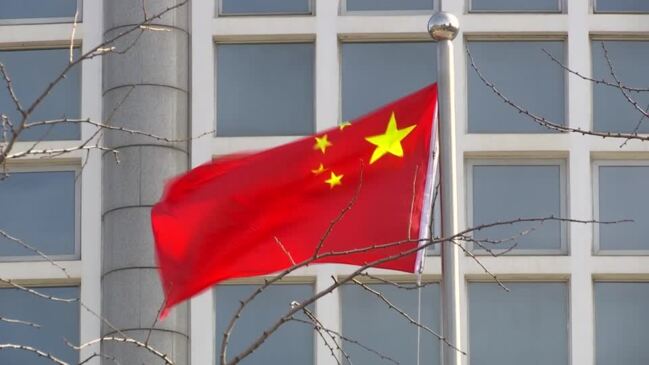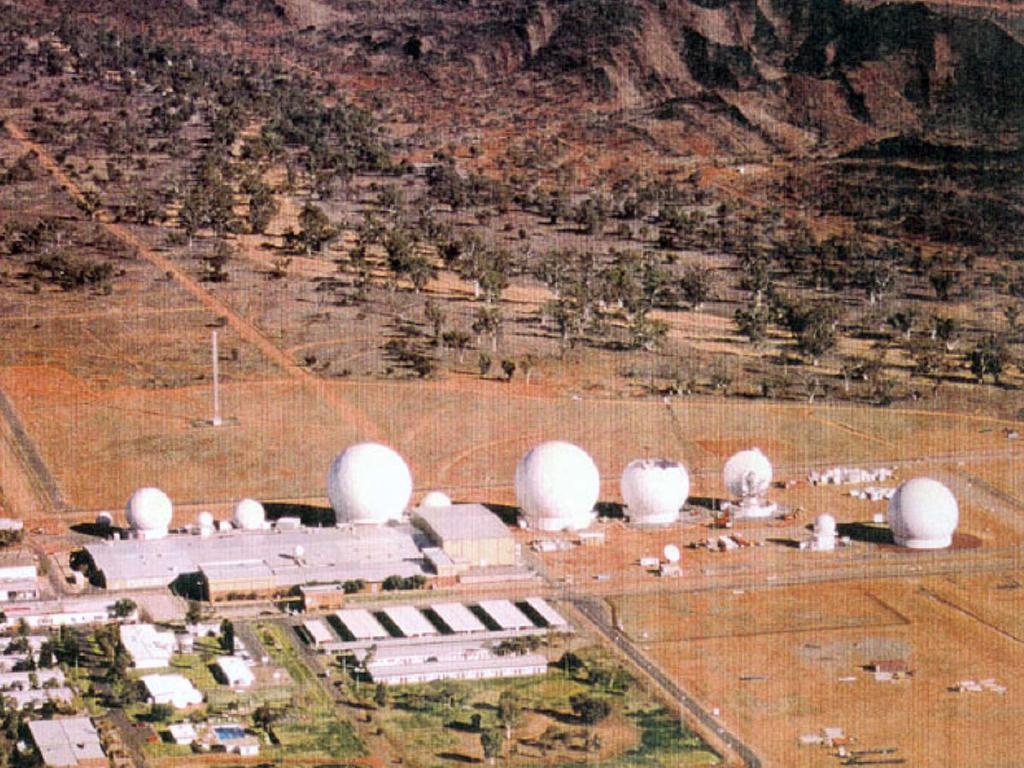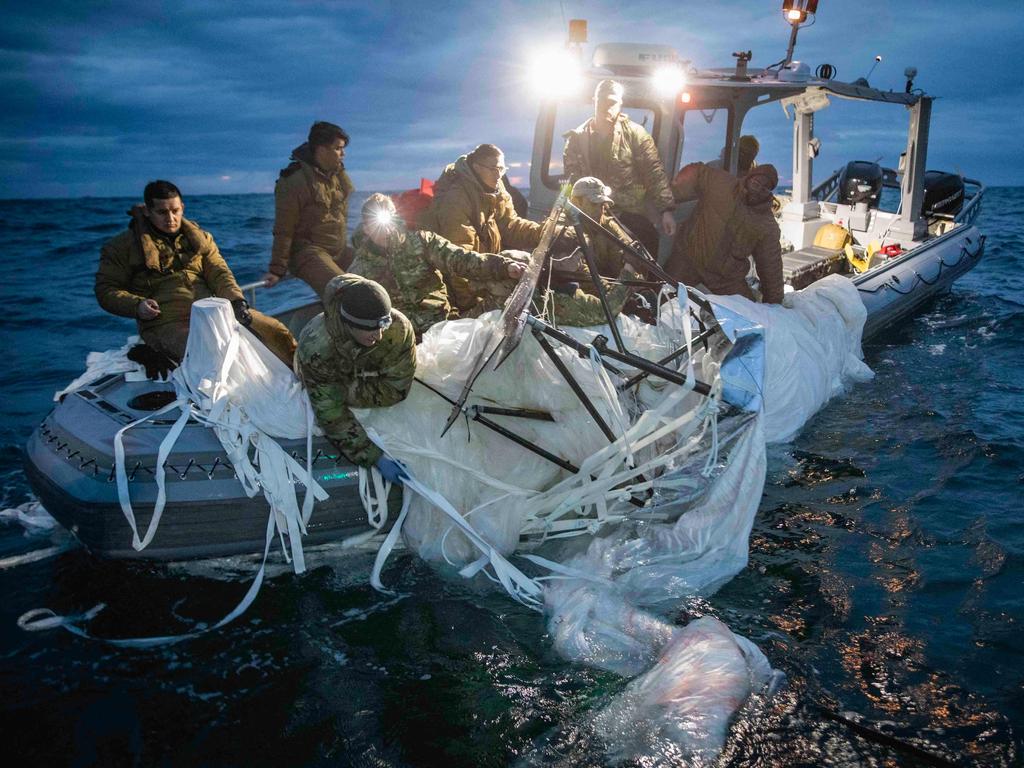US flew balloons through our airspace ‘10 times’ in a year, says China
China’s claims about multiple balloon incursions since 2022, categorically denied by the US, have added fuel to an escalating diplomatic standoff.

China alleged that the US had flown high-altitude balloons through its airspace more than 10 times since the start of 2022, adding fuel to an escalating diplomatic standoff between the countries that has derailed efforts to reset relations.
Foreign Ministry spokesman Wang Wenbin said at a daily press briefing Monday that US balloons regularly flew through other countries’ airspace without permission. It is the first time that China has made such an accusation since a suspected Chinese surveillance balloon was spotted over the US earlier this month and later shot down off the coast of South Carolina.
“The first thing the US needs to do is change its ways and reflect on itself, and not to smear and incite confrontation,” Mr Wang told reporters.
Mr Wang didn’t provide details on how China responded to the alleged US balloon flights at the time beyond saying that China had dealt with the matter responsibly and professionally. He said the US had acted illegally, without elaborating on whose laws the balloons may have flouted and in what way.
“Any claim that the US government operates surveillance balloons over the PRC is false,” Adrienne Watson, a spokeswoman for the US National Security Council, said Monday, referring to the People’s Republic of China. “This is the latest example of China scrambling to do damage control.” John Kirby, the NSC’s co-ordinator for strategic communications, also rejected Beijing’s claim of US aerial incursions of China as “just absolutely not true.”
“We are not flying balloons over China,” Mr Kirby said on MSNBC. Regarding the objects shot down by the US over the past few days, Mr Kirby left open the possibility that they might have had commercial or academic purposes and potentially weren’t nefarious.
NSC spokesman John Kirby says the U.S. is "not flying surveillance balloons over China."
— CBS News (@CBSNews) February 13, 2023
"I'm not aware of any other craft we are flying into Chinese airspace," Kirby tells CBS News' @nancycordes. https://t.co/sArNp6fruspic.twitter.com/Vpqqq0F5or
“There could be completely benign and totally explainable reasons for why these objects are flying around up there,” he said.
China has repeatedly said that the US overreacted by shooting down the Chinese balloon, which the Foreign Ministry has described as a civilian balloon for weather research that blew off course. US officials reject this explanation and say they are confident the balloon was for surveillance purposes and that it flew over multiple sensitive sites in the US.
In the wake of the Chinese balloon discovery, the US has stepped up high-altitude surveillance over North America – with fighter jets shooting down unidentified objects over Alaska on Friday, Canada’s Yukon territory on Saturday and Lake Michigan on Sunday.
Norad chief Gen. Glen VanHerck said on Sunday that Norad has reset its radar surveillance filters to capture objects flying slower and at different altitudes in the wake of the Chinese balloon. That has triggered more alerts, like those that led to the weekend’s shootdowns.
“What we are seeing is very, very small objects that produce a very, very low radar cross-section,” he told reporters.
Gen. VanHerck said it was unclear whether the objects shot down over the weekend were powered, and how they stayed aloft. But defence officials say they will continue tracking and potentially shooting down objects, even as officials are unsure about what they are taking down, defence officials said.

The military also has so far not released photos of the objects captured by fighter jets flying near them, which could help identify them.
US and Canadian officials say they are still working on identifying the objects and their origin.
Recovery operations for the three most recent objects shot down were still under way on Monday. Norad said recovery efforts for the craft shot down near Deadhorse, Alaska, Friday were being hampered by severe weather conditions and limited daylight.
US and Canadian authorities were working jointly to recover debris from the object shot down Saturday over the Yukon territory and the craft shot down Sunday over Lake Huron, which is bounded by Michigan and Canada. US officials said that craft appeared to have landed in Canadian waters.
The debris site at the Sunday shoot down in Lake Huron is most likely to be completed first, one US defence official said, because of the “technology and environment.” Canadian Defence Minister Anita Anand said the Yukon search would take time to conclude.
The debris “is in a very remote part of Canada. The terrain is very rugged,” she said during an appearance on CNN. “We know that it was shot down over central Yukon. We have teams on the ground and in the air, making sure that we are able to locate and analyse the debris.”

Elsewhere, Japan said on Monday it was prepared to shoot down foreign balloons that appear over its territory after confirming it has tracked three high-altitude balloons in recent years.
In January last year, a Japanese reconnaissance plane monitored a balloon as it passed close to the southern island of Kyushu. Balloons were also spotted over northern Japan in 2020 and 2021, government officials said.
Japan didn’t identify where it thought the balloons had come from or their purpose.
A government spokesman on Monday declined to comment on specific cases but said Japan had the option of taking military action against balloons if necessary. Asked at a press conference if Tokyo might need US F-22 aircraft to shoot down balloons because they can operate at high altitudes, the spokesman said Japan didn’t anticipate asking the US for help.
Separately, China’s Foreign Ministry confirmed Monday that China’s top diplomat, Wang Yi, would give a speech at the Munich Security Conference during a visit to Europe beginning on Tuesday. Mr Wang will also visit Russia during the trip, the ministry said.
Beijing’s allegations appeared to mark a shift in strategy. When the suspected Chinese surveillance balloon’s existence emerged, shortly before a planned trip to Beijing by Secretary of State Antony Blinken, China expressed regret over the matter.
Even while expectations were low for Mr Blinken’s visit, the trip nevertheless offered an opportunity to put a floor under ties and communicate directly with China at the highest levels about some of the most sensitive issues in the US-China relationship, such as Taiwan.
Some Chinese officials said they were caught off guard by the balloon. It also was a surprise to many officials in the US, coming at a moment both countries seemed to be seeking better ties.
Even after the US cancelled Mr Blinken’s trip, China for the most part didn’t go on the offensive with its public responses, instead signalling a desire to move on from the incident. The Foreign Ministry issued relatively brief statements on the matter last week.
The comments by the Foreign Ministry spokesman on Monday signalled a possible return to the more aggressive style of anti-U. S. language that had previously become a staple of Chinese diplomatic rhetoric under leader Xi Jinping.
“How many spy balloons has the US released into the world? In its heart, the US knows very well,” Mr Wang said. “It’s clear to the entire international community who is the world’s largest spying and surveillance empire.”
The Wall Street Journal
Catherine Lucey in Washington, Alastair Gale, Doug Cameron, Paul Vieira and Gordon Lubold contributed to this article.




To join the conversation, please log in. Don't have an account? Register
Join the conversation, you are commenting as Logout